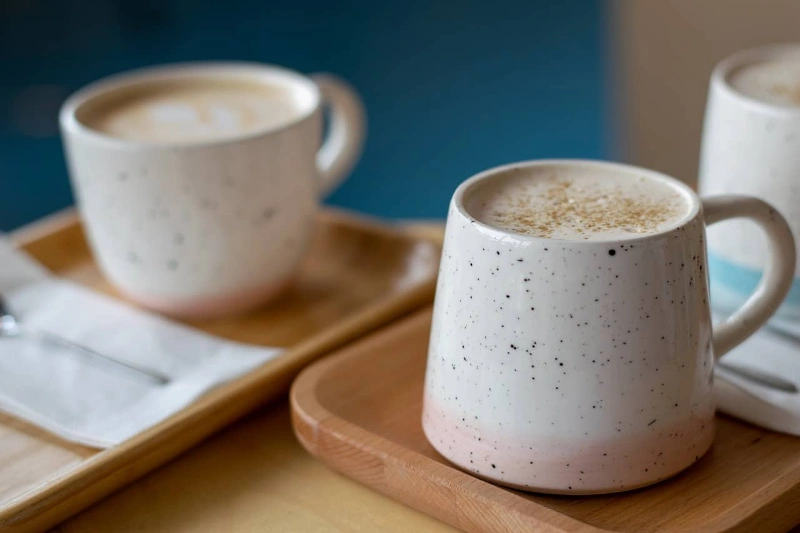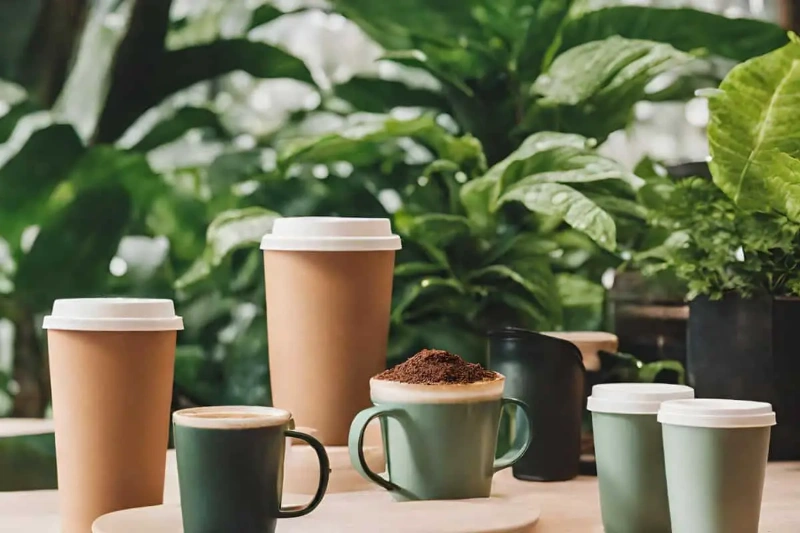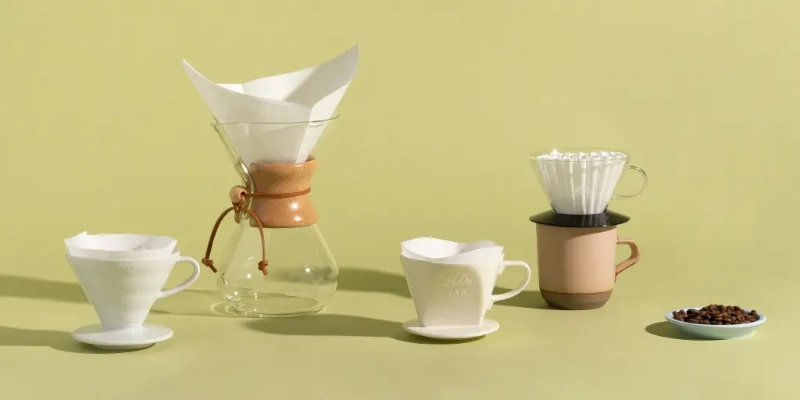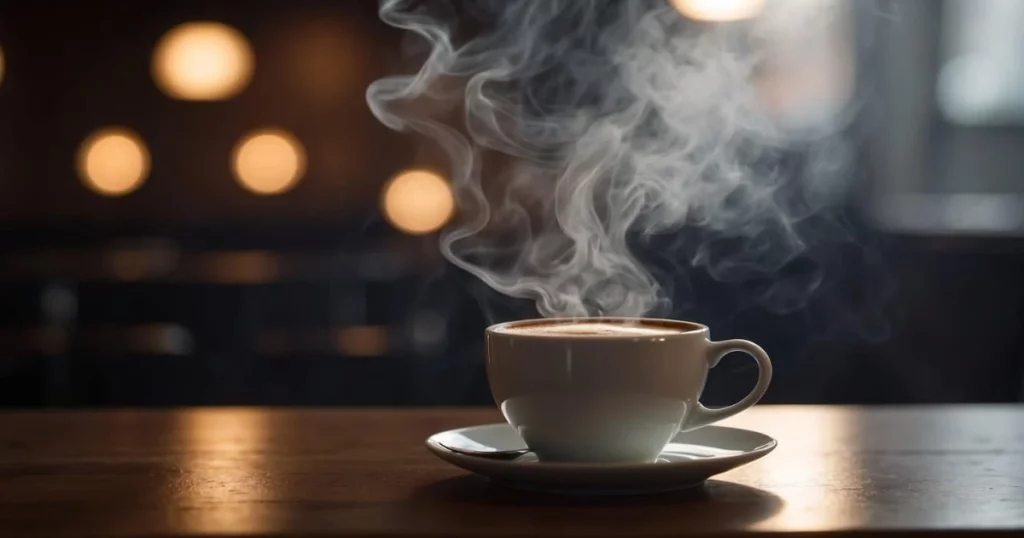No products in the cart.
Blog
Can a Cup’s Material Affect Your Coffee’s Taste?
When it comes to savoring a perfect cup of coffee, several factors come into play, from the choice of beans and brewing technique to the time of day you enjoy your brew. However, one often overlooked aspect is the material of the cup in which the coffee is served. Could the cup itself be subtly influencing the taste of your coffee? This article delves into the impact of different cup materials on coffee’s flavor, explores other vessel properties that affect taste, and seeks to determine the best material for a coffee mug.
How the Cup’s Material Affects Your Coffee’s Taste

When savoring a cup of coffee, its flavor can be subtly or dramatically affected by the material of the cup in which it is served. This impact can range from thermal properties to chemical interactions between the coffee and the cup material. Each material offers a different experience, influencing not only the taste but also the aroma and overall enjoyment of the coffee.
Thermal conductivity and heat retention are key factors. Materials that maintain the temperature well tend to enhance the flavor profile of coffee by keeping it at an optimal drinking temperature longer. Conversely, materials that conduct heat quickly might cool the coffee too rapidly, which can dull the flavors. Moreover, some materials can interact chemically with the coffee. For instance, porous materials might absorb flavors over time, while reactive materials might impart undesirable metallic or plastic tastes.
Understanding these properties can significantly enhance your coffee experience, leading to better choices depending on personal preference and the type of coffee being served.
The Effect of Vessel Choice on Coffee Flavor
Coffee enthusiasts and scientists alike have pondered whether the material of a coffee cup can modify the flavor of the beverage. Each material interacts differently with coffee, potentially altering its thermal, chemical, and sensory properties.
Glass

Glass cups are non-reactive, which means they do not alter the flavor of the coffee. Because they are chemically inert, glass vessels preserve the purity of the coffee’s taste. Another advantage of glass is its transparency, allowing the drinker to appreciate the color and texture of the coffee, enhancing the sensory enjoyment. However, glass does not retain heat as well as other materials, which can lead to a quicker loss of the desired drinking temperature.
Metal
Metal cups, including those made from aluminum, can impart a metallic taste to coffee, especially if the coffee is acidic. This interaction can slightly alter the flavor profile of the coffee, often making it less appealing. Metals are good conductors of heat, so they change the temperature of the coffee quickly—either cooling or heating it rapidly depending on the environment.
Stainless Steel

Stainless steel is a popular choice for travel mugs due to its durability and excellent heat retention properties. Unlike other metals, high-quality stainless steel is generally non-reactive when it comes to coffee. It doesn’t impart additional flavors into the coffee, maintaining the beverage’s original flavor profile. However, the thermal conductivity of stainless steel can be a double-edged sword, as it can make the mug too hot to handle if the coffee is poured at high temperatures.
Plastic
Plastic cups are the least favored among coffee aficionados when it comes to taste preservation. Certain plastics can interact with coffee, especially when heated, potentially releasing flavors that can be tasted in the coffee. Additionally, plastic is porous, which can harbor residues and odors that may influence the taste of coffee over time.
Ceramic

Ceramic mugs are arguably the most popular choice for drinking coffee. They are excellent at retaining heat and do not impart any additional flavors to the coffee, making them ideal for those who want to enjoy the pure taste of their brew. The porous nature of ceramic also provides an insulative layer, helping to keep the coffee warm for longer periods.
Other Vessel Properties That Affect Coffee Taste
Beyond the material, other aspects of a coffee cup can influence the drinking experience.
Cup’s Color
The color of the cup can psychologically influence how coffee is perceived. Studies have shown that coffee drunk from a white cup was rated as less sweet than the same coffee drunk from a clear or colored cup. This could be due to the contrast in color between the cup and the coffee influencing the perceived strength and flavor of the coffee.
Cup’s Shape

The shape of the cup can affect how coffee aroma is delivered, which can alter the perceived flavor. A narrow cup concentrates the aroma more than a wide cup, potentially enhancing the perceived intensity and flavor nuances of the coffee.
Coffee’s Temperature
The material of the cup affects how quickly or slowly the coffee’s temperature changes, which in turn influences taste. Hotter coffee tends to release more aroma but also emphasizes bitterness. A material that retains heat, like ceramic, helps maintain a consistent temperature, balancing flavor and aroma.
Best Material for Coffee Mug
Considering all factors, ceramic seems to be the best overall material for a coffee mug. It offers excellent heat retention, does not impart flavors, and supports consistent taste quality. Stainless steel is a close second, especially for those who need durability and portability.

FAQs
Q: Does the thickness of the cup material affect coffee taste?
A: Yes, thicker materials generally retain heat better, keeping the coffee at an optimal temperature for enjoying its full flavor for longer.
Q: Can the finish of the material impact flavor?
A: Yes, a glazed ceramic or a polished stainless steel will have less interaction with the coffee compared to materials with rougher textures, which might retain flavors or odors.
Q: Are there any health concerns associated with certain cup materials?
A: Yes, it’s important to choose cups made from food-safe materials. Avoid plastics that are not BPA-free, as they can leach harmful chemicals into hot beverages like coffee.

Conclusion
The choice of cup material does affect the taste of your coffee, although the extent can vary based on the type of coffee and personal sensitivity to taste differences. While ceramic offers the best performance for home or office use, stainless steel is ideal for those on the go. Remember, the best cup is one that complements your personal taste preferences and lifestyle.


